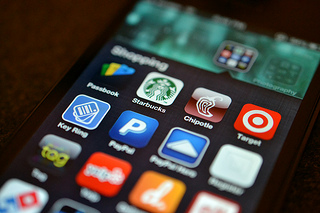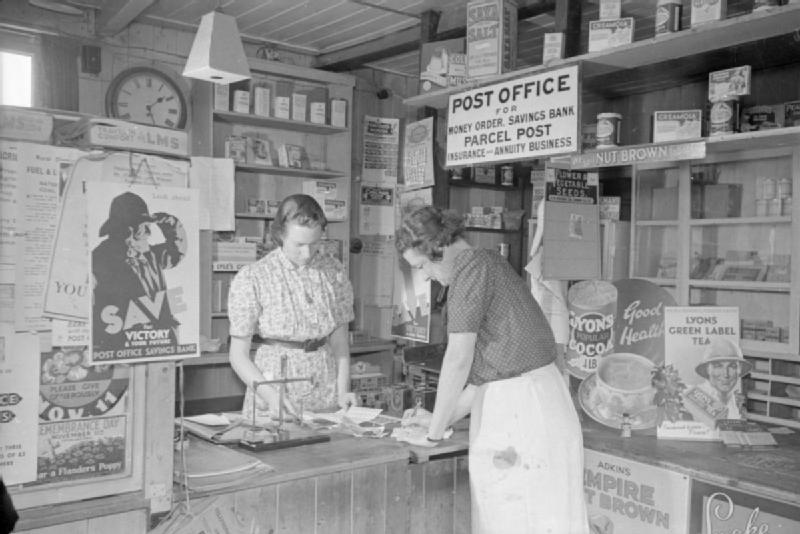 I’ve been asked to present at an upcoming conference – the in-Cosmetics Asia – on the topic of how technology is affecting shoppers, and what impact does that have on brand marketing. Clearly there are lots of gadgets, gizmos and new stuff; some of which will hit and some of which will miss. But beyond this mass of new media options, what exactly are the core implications for the way a consumer goods company goes about marketing its brands: how will technology affect consumer goods marketing?
I’ve been asked to present at an upcoming conference – the in-Cosmetics Asia – on the topic of how technology is affecting shoppers, and what impact does that have on brand marketing. Clearly there are lots of gadgets, gizmos and new stuff; some of which will hit and some of which will miss. But beyond this mass of new media options, what exactly are the core implications for the way a consumer goods company goes about marketing its brands: how will technology affect consumer goods marketing?
Gazing into a crystal ball is a dangerous game, but it appears to me that there are a number of key implications which brand marketers, shopper marketers and sales directors must be aware of, and plan for.
Relationships between brands and consumers will continue to change, and continue to run beyond the control of brand managers.
There was a time (well, maybe there wasn’t, but if feels as if there was!) when brand marketing was easy. Big budgets and narrow media options made gathering a big audience relatively straightforward. Media fragmentation saw that model off, and whilst that trend continues it is clear that the trend of media personalization is becoming more important. Consumers are now much more in control of the conversations about brands than ever before. Sure, we’ve had word of mouth and online discussion forums for some time, but the pace continues to grow at an alarming rate. As brand managers have less control over the brand conversation, it becomes more and more important to have influence across every touch point, and to manage this in a concerted manner.
Shoppers are far less homogeneous.
Once upon a time shopper marketers just talked about ‘the shopper’, as if they were all the same. And (perhaps) there was a time when this was a fairly safe approximation. Shoppers were assumed to have experienced a reasonably similar blend of marketing initiatives before they reached the point of purchase. Nowadays that assumption has been blown to pieces: different shoppers may have had completely different brand experiences based on their myriad paths to purchase. Assumptions that all shoppers arrive at the shelf with a similar view of your brand is patently false now and therefore it’s time to stop talking ‘the shopper’, and start talking about shopper segments, and target shoppers. And by that I mean much more than merely taking a retailer or agency shopper segmentation model – I mean really understanding for your brand and your category what makes shoppers different.
Channels proliferate, as do channel roles.
It seems as if every week there is a new place to buy. From pop up shops to subway station platforms more and more ingenuity is applied to finding moments where people might be persuaded to buy. And with that comes the reality that the roles of all of these stores will vary, and will vary for different shopper segments. Whilst most channels have always played somewhat different roles for shoppers (think convenience store versus hypermarket), with more channels available, the likelihood is that channels will play more specific roles. If online takes up more and more dry grocery and commodity purchase – will there come a time when supermarkets will focus more and more on fresh, or on premium, or on an entertaining shopping experience? If Korean commuters can scan a few items on the journey home, what role does the big box store play for them?
In-store marketing will be about cut through.
Once, getting the product on the shelf was the prime challenge. Today, whether on a real shelf or a web page, the marketing challenge will be cut through. Amazon offers a bewildering 49,000 lip products in their ‘beauty store’. Those old challenges of getting a listing have gone – but how do you ensure that your brand is chosen from the 49,000 on offer? In-store communication and media face the same challenges. Once there was a time that many retailers tightly regulated what went in-store. Now the talk is of apps, and location-based promotions – plus of course there is nothing stopping a shopper accessing myriad marketing messages through their smartphone. The challenge will be to understand, for a specific segment of shoppers, in a particular environment, which message and media will cut through and have impact.
Retailers will come, and retailers will go.
Perhaps the most over-looked, yet arguably commercially important impact of the technological shifts we see around us is that there are new retailers, and that there are failing retailers. Yes, we all know it is happening, yet many sales directors I talk to do not have a plan or a forecast as to how the retail landscape is going to shift, let alone what the implications for their profitability might be. As shoppers change, and channel roles change, don’t be surprised if the retailers which were important yesterday are less so today; and at the same time, you suddenly have some brand new key accounts to manage!
New world scenarios, old world solutions.
So how then to cope with the impact of all this new technology affecting consumer goods marketing? Ironically, it appears that it is good old fashioned marketing which comes to the rescue. At the heart of managing all of this lies the age old marketing skills of segmentation, targeting and prioritization. Techniques which have been traditionally applied to consumers must now be used to better understand shoppers, channels and customers. Planning processes must become more integrated, so that what is known about consumers is fed into what is known about shoppers, into channels and so on. Without this, there is a danger that the activities planned are generic at best, and become further and further out of step with what is happening in the land of the consumer and the shopper.
There is only so much which can be covered on this in a short blog post; but over the coming weeks and months I will be exploring and expanding upon each of these themes in a little more detail. To make sure you don’t miss any of these posts, please subscribe to my blog here.
Feature image: Flickr user Jason A. Howie




